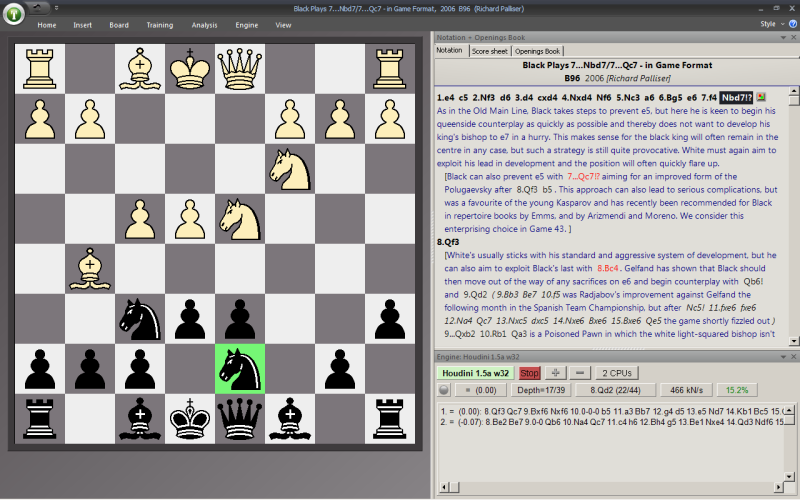Unfortunately one of the most logical systems in chess is also one of the most theoretical. I say that because the Najdorf is a great system to play when white doesn’t play strict "book". In my experience, if white doesn’t play theoretical lines black inevitably takes over the position by playing fairly obvious moves, putting pressure on points he's set up to attack better than white is to defend. It reminds me of a comment that made me laugh on ozchess - a correspondence game was started with 1.e4 and Dave Beaumont said “positional mistake- the pawn’s under-defended.” The Najdorf is a system that often makes me think that statement is true!
Anyway- White has good chances in the sharp theoretical lines, as for the rest, even for an undercooked positional player like me – the position plays itself. I'll look at 6. Bg5 lines with a delayed Be7 for black, which makes sense because black rarely castles in the Najdorf anyway.
a) One nasty sideline with 10. Bxf6 & 11. e5
b) The horrible world of Nd5 sacs!
c) The Sozin setup with Bc4 - which deserves a post of it's own.
In the first sentence I distinguished between the theoretical and the logical, because that’s what it sometimes feels like for me. That’s slightly unfair to the theory though, so in this post I’ll try to show the logic behind the theory. Before you read this post on theory I'd recommend looking back at posts (1, 2, 3) to understand the themes of the Najdorf when white doesn't play accurately (if you don't already know them).
a) 10. Bxf6 sideline
What a tedious amount to have to learn for a sideline! I thought I'd try to show some logic behind these strings of moves, and though there are some typical Najdorf moves from both sides in there, I'm thinking more and more that it's just memory work. I haven't memorised an opening for many years and it's helped my chess (and my enjoyment!) a lot, but sometimes you have to take the good with the bad- below 2000 level the Najdorf is an opening you can play with common sense, but you have to be prepared for a guy who's had Fritz running on deep position analysis until his keyboard's melted too.
b) Nd5 sacs
Black to play: Qb6!?, Rc8!?, Be7!?
1. Palliser gives Qb6! But only if you're able to play a tricky ending with 3 white pieces for your queen:
2. Rc8 - I'd love to make this move work. It develops, it ties up the d3 bishop a little bit, and I like the idea of provoking a move like Kb1 when black can get another tempo to coordinate/develop his pieces. The following is just me playing around with Rybka, it's amazing how black gets these +2, +3 positions which turn into losses with one inaccurate move.
(14. Bf4 is also pretty challening, black can give up an exchange and get a comfortable position. Qc4 is probably the move for black.)
3. Be7 is arguably safer, pushing the game into known waters as white really only has Qg3! to continue the attack. It's a simple attack to play and an extremely difficult defence which makes me not at all drawn to it.
I'll post a few annotated games in this line as I play them- tonight is fixed opening night at the MCC and I'm sure there'll be a few people keen to come and obliterate the Najdorf!;)


No comments:
Post a Comment